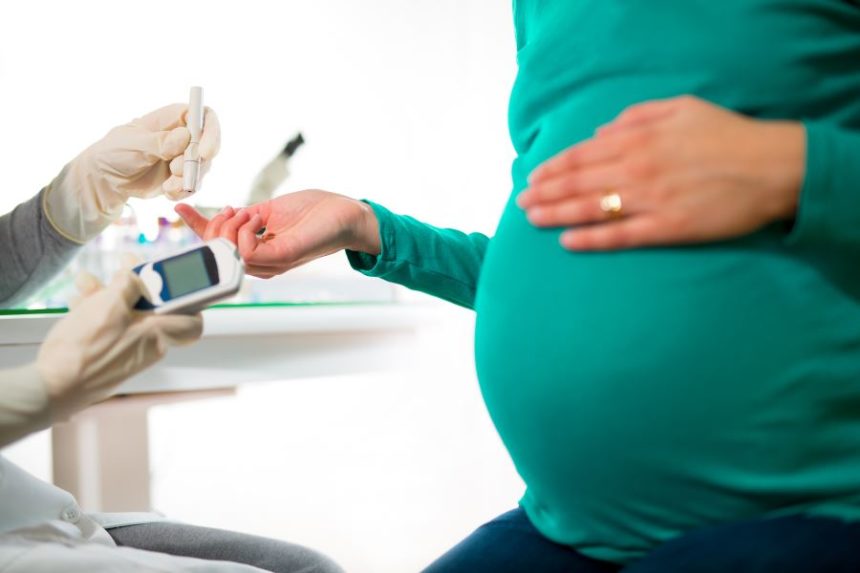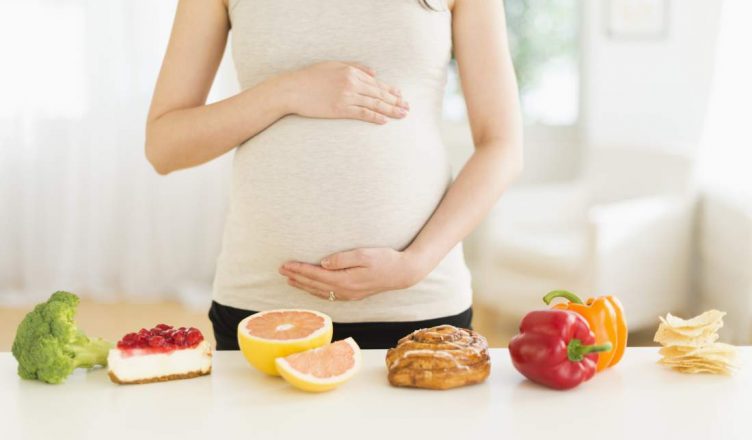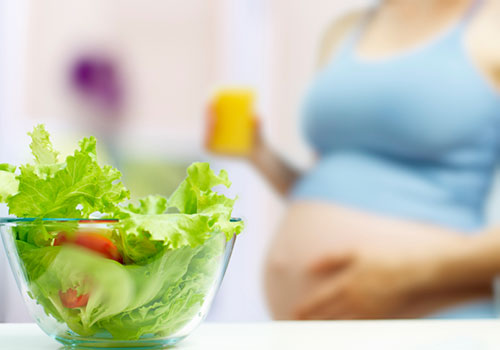Pregnancy is a beautiful phase of every women's life; with little precaution this journey can be memorable. Hellodox wishes happy nine months with expert advice on yoga, exercise, meal plans, natural care and home care. Get the best pregnancy care tips and charts on HelloDox.
Back pain in pregnancy
It is very common to get backache or back pain during pregnancy, especially in the early stages.
During pregnancy, the ligaments in your body naturally become softer and stretch to prepare you for labour. This can put a strain on the joints of your lower back and pelvis, which can cause back pain.
Avoiding and easing back pain in pregnancy
Try these tips:
bend your knees and keep your back straight when you lift or pick something up from the floor
avoid lifting heavy objects
move your feet when you turn to avoid twisting your spine
wear flat shoes to evenly distribute your weight
try to balance the weight between 2 bags when carrying shopping
keep your back straight and well supported when sitting at work and at home – look for maternity support pillows
get enough rest, particularly later in pregnancy
a massage or warm bath may help
use a mattress that supports you properly – you can put a piece of hardboard under a soft mattress to make it firmer, if necessary
go to a group or individual back care class
You can take paracetamol to ease back pain while you are pregnant, unless your GP or midwife says not to. Always follow the instructions on the packet.
Exercises to ease back pain in pregnancy
This gentle exercise helps to strengthen stomach (abdominal) muscles, which can ease back pain in pregnancy:
start on all fours (a box position) with knees under hips, hands under shoulders, fingers facing forwards and stomach muscles lifted to keep your back straight
pull in your stomach muscles and raise your back up towards the ceiling, letting your head and bum relax downwards gently – don't let your elbows lock
hold for a few seconds then slowly return to the box position
take care not to hollow your back – it should always return to a straight, neutral position
do this slowly and rhythmically 10 times, making your muscles work hard and moving your back carefully
only move your back as far as you comfortably can
Doing prenatal yoga or aquanatal classes (gentle exercise classes in water) with a qualified instructor can also help build your muscles to better support your back. Ask at your local leisure centre.
When to get help for back pain in pregnancy
If your backache is very painful, talk to your GP or midwife. They may be able to refer you to an obstetric physiotherapist at your hospital, who can give you advice and may suggest some helpful exercises.
Contact your GP or midwife as soon as possible if you have back pain and you:
are in your second or third trimester – this could be a sign of early labor
also have a fever, bleeding from your vagina or pain when you pee
lose feeling in one or both of your legs, your bum, or your genitals
have pain in one or more of your sides (under your ribs)
Abdominal pain during pregnancy can be a normal part of the process as your body changes to accommodate your growing baby. While there are many harmless causes of abdominal pain in pregnancy, some may be more serious. As an expectant mother, it is important to educate yourself on all potential causes so you are able to recognize symptoms that may cause concern.
Common Causes of Abdominal Pain during Pregnancy
Mother with serious abdominal pain during her pregnancy dome abdominal aches and pains during pregnancy are quite common and generally pose no threat to you and your baby. These include:
Round Ligament Pain: This can be characterized by a sharp stabbing pain when you change positions, or it can also be an achy, dull, lingering pain. Round ligament pain is caused by the two large ligaments that run from your uterus to your groin. As the uterus grows, these ligaments are stretched and create discomfort. This pain is generally reported in the second trimester, and considered to be harmless. Read another article on full Round Ligament Pain.
Gas and Constipation: Gas during pregnancy is caused by increased levels of progesterone. As more of this hormone is released, your gastrointestinal tract slows down, which makes food travel more slowly. Drinking plenty of water, eating fiber rich foods, exercising, and using stool softeners are excellent ways to combat excessive gas and constipation. Read another article on Constipation during Pregnancy.
Braxton Hicks Contractions: Sometimes labelled “practice contractions,” Braxton Hicks are more of a mild annoyance than a risk to you or your baby. Many women report that Braxton Hicks feel like a tightening of the stomach muscles so your stomach feels firm or hard. It is important to differentiate Braxton Hicks from true contractions. True contraction will be closer together, last for a longer period of time, and are painful. True contractions will take your breath away, so a general rule of thumb is that if you are able to carry on your normal activities, then it is most likely Braxton Hicks. Also, doctors report that Braxton Hick can be caused by dehydration, so drinking plenty of water can help eliminate this problem. Read another article on Braxton Hicks Contractions.
Common Discomforts: In addition to those listed above, there are several other common abdominal discomforts that can be experienced during pregnancy and are generally non-threatening. Your growing uterus, stomach viruses, kidney stones, fibroids, and food sensitivities are all valid forms of harmless abdominal pain.
When Abdominal Pain during Pregnancy is Serious
Pregnant woman with abdominal pain although many women who experience abdominal pain have healthy pregnancies, there are times when abdominal pain can pose a serious risk. If you exhibit any severe symptoms, such as those discussed below, please consult your medical care professional immediately.
Ectopic Pregnancy: Occurring in 1 out of 50 pregnancies, an ectopic pregnancy is when the egg is implanted anywhere other than the uterus. Most often, the egg is implanted in the fallopian tube. Sadly, an ectopic pregnancy cannot continue to term and requires medical treatment. In the unlikely event that you have an ectopic pregnancy, you may experience intense pain and bleeding between your 6th and 10th weeks of pregnancy. Women at increased risk for an ectopic pregnancy include those who have had an ectopic pregnancy in the past or have had endometriosis, a tubal ligation, or an intrauterine device (IUD) in place at the time of conception. Read another article on Ectopic Pregnancies.
Placental abruption: Placental abruption is a life-threatening condition in which the placenta separates from your uterus before the baby is born. One symptom of placental abruption is constant pain that causes your stomach to stay hard for an extended period of time without relief. Another sign is bloody fluid or premature breakage of your water. Additional symptoms include tenderness in your abdomen, back pain, or fluid discharge that includes traces of blood. You can access the complete Placental Abruption article on HelloDox.
Miscarriage: The unfortunate truth is that 15 to 20 percent of pregnancies end in miscarriage making it the most common form of pregnancy loss. Sometimes referred to as “spontaneous abortion,” miscarriage most often occurs in the first 13 weeks of pregnancy. Signs of a miscarriage include mild to severe back pain, true contractions (happening every 5-20 minutes), brown or bright red bleeding with or without cramps, tissue or clot-like material passing from the vagina, and a sudden decrease in other signs of pregnancy. Read another article on Miscarriage.
Urinary Tract Infection: While easily treated during pregnancy, if ignored, a urinary tract infection can cause complications. Most often recognized by pain, discomfort, and/or burning when you urinate, UTIs can also produce lower abdominal pain. Should you notice pain in your lower back, the sides of your body under your rib cage or above your pelvic bone accompanied by fever, nausea, sweats, or chills, then it is possible that the UTI has spread to your kidneys. If this is the case, seek medical attention as soon as possible.
Preeclampsia: Preeclampsia is a condition in pregnancy characterized by high blood pressure and protein in the urine after 20 weeks gestation. Upper abdominal pain, usually under your ribs on the right side, can accompany other symptoms used to diagnose preeclampsia. Nausea, vomiting and increased pressure on your abdomen are additional symptoms that will affect your abdomen. Read another article on Preeclampsia.
When should you call your Doctor?
Please call your medical care professional immediately if any of the following symptoms accompany abdominal pain or discomfort:
Severe or persistent pain
Spotting or bleeding
Fever
Chills
Vaginal discharge
Light-headedness
Discomfort while urinating
Nausea and vomiting
Diabetes is one of the most prevalent metabolic conditions that is afflicting million around the world currently. Diabetes is a condition marked by abnormal metabolism of glucose, which causes blood sugar fluctuations. If the findings of a latest study are to be believed, children and youths whose mothers had diabetes during their pregnancy are also at an increased risk of the disorder.
For the study, the team assessed 73,180 mothers. The findings revealed that a child or teenager whose mother had gestational diabetes -- diabetes during pregnancy -- was nearly twice as likely to develop diabetes before the age of 22 years. The study, published in Canadian Medical Association Journal.
"Although Type-1 and Type-2 diabetes in parents are well-established risk factors for diabetes, we show that gestational diabetes mellitus may be a risk indicator for diabetes in the mother's children before age 22," said Kaberi Dasgupta, clinician-scientist from the McGill University in Canada.
"This link of diabetes in children and youth with gestational diabetes in the mother has the potential to stimulate clinicians, parents, and children and youth themselves to consider the possibility of diabetes if offspring of a mother with gestational diabetes mellitus develop signs and symptoms such as frequent urination, abnormal thirst, weight loss or fatigue," said Dasgupta.
While scientists around the world are working to device ways in which you can reverse diabetes, until then you must take all precautionary measures to make sure your blood sugar levels are stable at all times. As per World Health Organization, diabetes can be treated and its consequences can be avoided or delayed with the help of a healthy diet, physical activity, medication and regular screening.
Here are some foods that you can include in your diet to manage gestational diabetes.
1. Chicken
2. Eggs
3. Nuts
4. Quinoa
5. Beans
6. Fish
7. Legumes
Make sure you consult your gynaecologist or doctor before you make any major alteration to your diet.

Pregnant women are advised to be very careful about their diet. Certain foods are said to be a strict no for expectant mothers and nutritionists and health experts always advise pregnant women to omit these foods and drinks from their diets, lest their harm their babies in some way. This is why during pregnancy a healthy meal plan should ideally be in place to ensure health of the mother and the baby. A new study has pointed towards the harmful effects of consuming potato chips and vegetable oil during pregnancy. The study warns mothers about the side-effects of consuming too much of these two foods, saying that such a diet may increase risk of complications during pregnancy and may even hamper development of the baby. However, it's the reason behind this warning that's a shocker- omega 6 fatty acids.
Researchers have said excessive presence of omega 6 fats, particularly linoleic acid, in pregnancy diet may result in increased inflammation and in the mother's body and may even increase the risk of heart diseases. The results of the study were published in The Journal of Physiology and they said that consuming linoleic acid that equaled three times the safe consumption limit, was harmful for mothers during pregnancy term. The study was conducted on rats and it was observed that pregnant rodents who consumed diets rich in linoleic acid had high concentrations of inflammatory proteins in their livers.
Additionally, they also had high concentrations of a protein which could induce contractions in the uterus during pregnancy, as well as low levels of a hormone which is important for regulating growth and development of the baby. Human diets rich in linoleic acid, also tend to be rich in fats, sugar and salt, said the researchers. Study lead author Deanne Skelly, Professor at Griffith University in Australia said in an IANS report, "It is important for pregnant women to consider their diet, and our research is yet another example that potentially consuming too much of a certain type of nutrient can have a negative impact on the growing baby."

A well-balanced outlook to nutrition has far reaching benefits for a long and healthy life. Eating right is important for all of us throughout our lives, but ladies who are planning to become moms or are pregnant need to pay attention to their dietary needs a little bit more. The extras are needed for foetal growth, maternal tissue expansion during pregnancy and for milk secretion during lactation. Eating healthy helps the baby develop and grow healthy. Research has confirmed that the health of an individual is determined by the health of a mother even before conception and that eating patterns have a direct effect on the long term health of a child - from womb to grave. Getting it right during this phase in a woman's life is not all that tough. Nature provides us with enough and more foods loaded with nutrients and health benefits. The density of crucial nutrients may vary in different foods, but it's all easily available around us. So, all that you need to do during pregnancy is have a wide variety of fresh ingredients to ensure wholesome nutrition for the baby and yourself.
What To Eat When You Are Pregnant | Pregnancy Diet | Healthy Eating During Pregnancy
Carbohydrates are the primary source of energy which is the most important nutritional requirement for our bodies to function at an optimal level. In addition to calories, healthy carb sources also provide vital nutrients like vitamins, minerals and healthy fibre.
Choose Healthy Carb Sources Over Empty Calories During Pregnancy
Unprocessed or minimally processed whole grains like wheat, barley, ragi, oats, bajra and corn are good options to choose from for your pregnancy diet. Legumes, milk, vegetables and whole fruits are also healthy sources of energy rich carbohydrates.
Proteins To Eat During Pregnancy
Proteins are the most important building block of every cell in our body. Pregnant and lactating mothers need a higher amount of protein for the ever increasing volume of blood component in the mother and for optimal development of the baby. NIN (National Institute of Nutrition) suggests an additional 0.5g protein for the first trimester, 6.9g for the second and 22.7g for the third trimester, respectively.
Sources of Protein: Animal proteins are a better quality because they contain all the 9 essential amino acids needed by our body. Lean unprocessed meat, chicken, fish and eggs are all sources of quality protein. In the vegetarian section milk, cheese, paneer and other milk products are the top-of-the-list choices. Legumes and lentils, especially when taken in combination with whole grains assures better quality protein and is enough to provide for healthy protein intake. Nuts and seeds are another source of healthy proteins.
Dairy Products During Pregnancy
Dairy products provide the most important Calcium for a mother-to-be. Calcium is a mineral that the growing foetus requires for proper formation of bones and teeth. Milk is also an essential nutrient for children.
Sources: Cow and buffalo milk, soy milk, paneer, cheese, yogurt , chaas, lassi.
Fruits & Vegetables During Pregnancy
Fruits and vegetables provide the body with vitamins, minerals, antioxidants and fibre. They help alleviate constipation, a common problem during pregnancy, by adding roughage to the diet. This also helps in better digestive health which means better absorption of nutrients.
Recommended amounts are 5 serving of seasonal fresh fruits and veggies daily.
Fats & Sugars During Pregnancy
Fats and sugars are required to meet the daily calorific targets, though many pregnant women may end up consuming more than is required. The trick lies in selecting the right source and, of course, in the right quantity. Excessive intake of high fat and sugar foods adds up to empty calories which further leads to unhealthy weight gain. Too much of saturated fats may increase your risk of cardiac diseases too.
Sources of healthy fats are peanut oil, sunflower oil, rice bran oil, mustard oil, linseed oil and desi ghee in moderation.
Balancing each meal will help you eat your quota of all essential nutrients.
In the third trimester small frequent meals may be a better option.
Snacking healthy is another way of achieving your nutritional goals. Instead of just reaching out for ready-to-eat snacks choose the traditional homemade ones like ladoo, panjiri, mathis made fresh in small batches. These are still high-fat and sugar-foods so limit the quantities. Other snacks you can choose are roasted nuts, popcorn, bhelpuri, grilled paneer tikka, bhuna chana, dhokla, multigrain bread sandwiches.
Eat healthy, eat tasty and enjoy the most happy part of your life.












